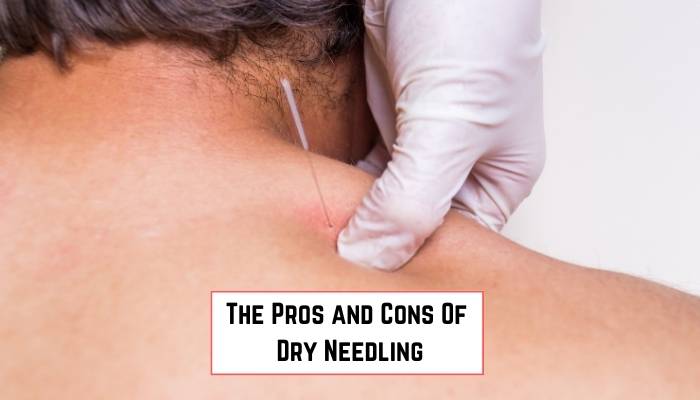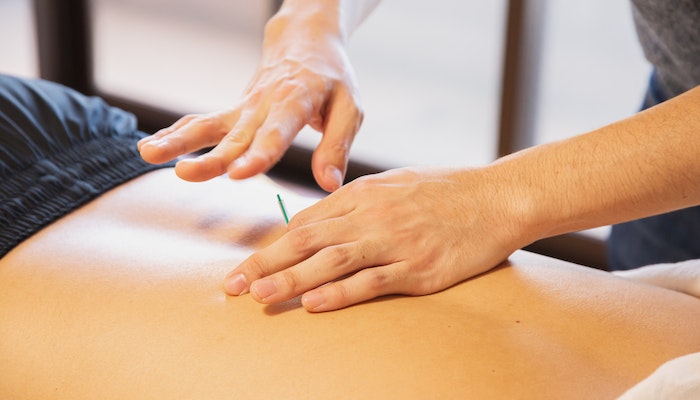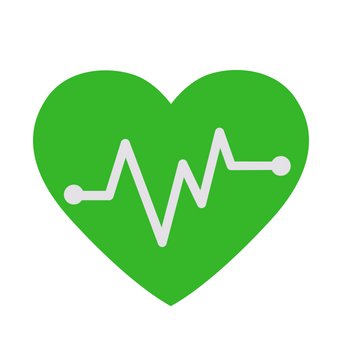
Dry needling technique has been used for centuries to treat various pain conditions. It is a form of acupuncture that uses very small needles to stimulate certain points on the body
The needles are inserted into the skin and then moved around until they reach the target area. There are many benefits of dry needling, but there are also some cons associated with it.
How does dry needling work?
Dry needling is a traditional Chinese medical treatment that involves using thin needles to stimulate acupuncture points on the body. The goal of dry needling care is to relieve pain and inflammation, and some people believe it can also improve the function of damaged muscles. Like other treatments, there are pros and cons of dry needling, so it’s important to understand what works best for each individual.
The Science claimed behind working
The primary mechanism by which dry needling or ‘trigger point dry needling’ reduces pain is through the release of opioids, which then stimulates blood flow to promote healing, relaxation, and anti-inflammation. The activated opioid receptors, therefore, are part of the endogenous opioid system, which is the body’s internal pain-control system.
Basically, a needling specialist examines the area and locates myofascial trigger point, which are particular muscular regions. When stimulated with a needle by the expert, these points produce a local twitch response, which activates endogenous opioids, which block pain in the connective tissues.
The other working principle of dry needling is the stimulation of blood flow. Minor trauma to the muscle areas activates the body’s receptors, signaling that assistance is required. The body then responds by sending oxygen-carrying blood to the affected area.
Why to evaluate the pros and cons of dry needling before action ?
Evaluating the advantages and drawbacks of dry needling is crucial to make informed healthcare decisions. It helps healthcare providers and patients assess the potential benefits, such as pain relief and improved mobility, against the risks, including potential adverse effects or complications, ensuring a balanced and safe approach to this treatment modality.
The pros of dry needling
Since discovered in the 40’s by Dr. Janet Travell, the physical therapy treatment offers several benefits today. The treatment helps in reducing musculoskeletal conditions – pain, tension and stress in the muscles. Unlike western medicine, it can also be used as a fast relief aid in certain injuries. Patients who struggle to fall asleep due to restless legs syndrome also benefit from dry needling therapy.
Immediate Pain relief
Dry needling technique aids in reducing pain and discomfort ranging from low back and neck pain to joint pain. The pain improves as the muscle knots are released and blood flow improves. The enhanced blood flow results in better oxygen circulation within the body and faster healing.
Regain Movement and Stiffness relief
Dry needling is used by physical therapists to relieve muscle tension, ease shoulder pain and swelling, and accelerate healing. So, to increase range of motion that might be restricted by tight muscles or scar tissue, dry needling is used.
This Physical therapy deactivates the myofascial trigger point, which can help muscles function properly again, relieve inflammation, and increase mobility. This practice is frequently used to treat neck, back, and knee pain and also help with TMJ or tension headaches.
Fast Recovery after sports injury
Dry needling can be used in sports recovery not only for pain control after injury, but also for regular recovery, such as in muscle soreness that occurs slowly. It is a very successful approach for resuming activity after a sports injury, which is the reason it is common between several sports physical therapists and athletes alike. Numerous case reports describe the use of acupuncture and dry needling to treat athletes with a range of diagnoses and conditions.
Relief in Chronic Pain
Dry needling can help patients with orthopedic tension, myofascial trigger point pain, and movement issues. Chronic pain and symptoms brought on by a number of different conditions, such as arthritis, have been successfully treated with it. The drug-free method targets myofascial trigger point that form within stressed muscles of the shoulder, neck, heel, hip, and back. In addition, the prick feeling can invoke nerve cells in the brain that cause pain relieving hormones called endorphins by the body.
Precise target healing
Dry needling’s precise targeting extends to deep tissues, enabling effective treatment of areas that may have previously been challenging to reach, ultimately improving overall therapeutic outcomes. This makes it particularly useful for conditions involving deep-seated trigger points.
Supplemental Benefits
Dry needling, when used with joint movements and personalized strengthening exercises, can work together to improve rehabilitation. This approach helps with pain and tackles the root problems of muscle and bone musculoskeletal issues.
Less time taking
The short duration of dry needling sessions, typically around 30 minutes, allows patients to integrate treatment seamlessly into their schedules, reducing disruptions to their daily lives. This convenience makes it accessible for those with busy lifestyles.
Faster Recovery
By promoting increased blood flow to injured tissues, dry needling not only speeds up the recovery process but also contributes to better post-injury functionality and reduced downtime. This can be particularly beneficial for athletes and active individuals.
Increased Blood Flow
Improved blood circulation facilitated by dry needling ensures that damaged tissues receive a greater supply of oxygen and nutrients, facilitating faster healing and recovery. Enhanced blood flow can support overall tissue health.
Wide range of action
Dry needling’s versatility in addressing a wide range of musculoskeletal and nerve-related conditions makes it a valuable option for patients with various health concerns. This adaptability allows for personalized treatment plans.
Safe for Combination Therapy
Dry needling’s compatibility with other treatment modalities allows healthcare providers to design customized, comprehensive treatment plans tailored to each patient’s unique needs. This integrated approach optimizes outcomes.
Minimal Invasiveness
Dry needling’s use of thin without injections minimizes discomfort and the risk of complications, making it a well-tolerated option for many patients. The minimal invasiveness enhances patient comfort.
Immediate Pain Relief
Many patients experience near-instantaneous pain relief during dry needling sessions, providing immediate comfort and improved functionality. This rapid relief from myofascial trigger point pain can have a profound impact on a patient’s daily life.
Reduced Need for Pain Medication
Dry needling can help reduce or eliminate the need for pain medications, offering a drug-free alternative for pain management. This can be especially valuable for individuals concerned about medication side effects or dependency.
Promotes Tissue Repair
By promoting tissue repair processes, dry needling actively contributes to the body’s natural healing mechanisms, fostering a faster and more complete recovery from injuries. This proactive approach supports long-term wellness.

The cons of dry needling
Dry needling on the whole carries relatively minor cons such as temporary discomfort during sessions, muscle soreness after treatment, and the possibility of bruising or swelling.
While these drawbacks are generally manageable, patients should be well-informed about them before choosing dry needling as a therapy option.
Discomfort During Sessions
Dry needling can cause discomfort during the sessions. While it’s not particularly painful, some patients may experience minor discomfort, especially when their muscles are tight and inflamed.
Patients should be aware that the discomfort experienced during dry needling sessions can vary from person to person and may diminish as the treatment progresses and the muscles respond to the therapy.
Muscle Soreness After Treatment
Patients often feel muscle soreness for around 24 hours following dry needling. This soreness can be uncomfortable and might worsen symptoms temporarily.
It’s important for patients to understand that this post-treatment muscle soreness is often a normal response to the therapy and is usually a sign that the muscles are being effectively stimulated and may improve with subsequent sessions.
Bruising or Swelling
Some patients may experience bruising or swelling at the dry needle insertion sites. This is more likely for individuals with blood-clotting conditions, immune system disorders, or thin skin. While usually temporary, it can be a concern.
Patients with a tendency to bruise easily or with underlying health conditions should inform their healthcare provider before undergoing dry needling, as it can help the practitioner adjust the technique or provide additional guidance to minimize the risk of bruising or swelling.
Possible Pain and Bleeding
Dry needling may lead to short-term pain, bleeding, or bruising. In rare cases, it can cause increased pain levels after treatment. It’s important to be prepared for these potential side effects.
In some instances, patients may also experience numbness, discomfort, or fatigue during or after a dry needling session, which can be another aspect of the possible discomfort associated with this treatment.
Risk of Infection
Any time the skin is punctured, there’s a risk of introducing bacteria into the body. However, the use of sterile needles reduces the risk significantly, but it’s still a possibility to be aware of.
It’s crucial for both patients and practitioners to strictly adhere to sterile techniques and hygiene protocols to minimize the risk of infection during dry needling procedures.
Limited Research
While promising, research on dry needling is still relatively limited. Some patients may prefer more extensive scientific evidence before trying this treatment.
Patients should discuss their specific condition and treatment options with a healthcare professional to make an informed decision regarding dry needling, taking into account both the available research and their individual health needs and preferences.
Not Recommended for All Patients
Dry needling is not recommended for patients with certain symptoms or conditions, such as bleeding disorders, infections, open wounds, compromised immune systems, or those taking specific medications.
Additionally, individuals with a fear of needles may not be suitable candidates. It’s essential for patients to have a thorough evaluation and consultation with a qualified healthcare provider to determine whether dry needling is a safe and appropriate treatment option for their specific circumstances and medical history.
Risk of Phony Professionals
There’s a risk associated with receiving dry needling from untrained professionals. Incompetent practitioners may not perform the technique correctly or use unsterilized needles, potentially causing pain, allergic reactions, or other complications.
Patients should always verify the credentials and qualifications of their chosen healthcare provider to ensure they are licensed and experienced in performing dry needling safely and effectively.
Not Covered by Most Insurances
It’s worth noting that dry needling is often not covered by health insurance plans, necessitating careful consideration of the financial aspect before pursuing this treatment. This financial aspect can be a drawback for some patients.
Patients should carefully consider their budget and potential long-term treatment needs when factoring in the out-of-pocket costs associated with dry needling, as multiple sessions may be required for optimal results.
Mild Level of Risks
While the risk of complications is very low (<0.01%), it’s essential to acknowledge that there is still some level of risk associated with dry needling.
Patients should engage in open communication with their healthcare provider about any concerns or preexisting conditions to ensure the procedure’s safety and effectiveness, despite the low risk of complications associated with dry needling.
Summarizing Side effects of dry needling
In general, dry needling is a safe procedure. The majority of negative consequences have been mild like –
- Pain and swelling during or following therapies
- Bleeding at the trigger point site of the needle insertion
- Fatigue after the therapy
What happens when dry needling hits a nerve
As dry needling therapy uses fine needle insertion into myofascial trigger points, it carries a risk of hitting nerves, leading to symptoms like numbness, tingling, weakness, and radiating pain. Nerve damage is rare but possible, so practitioners need good anatomical knowledge.
Studies show potential intramuscular nerve damage, mirroring muscle injury. Despite this, dry needling is generally safe and effective for chronic neuropathic pain, with minimal side effects. Soreness is the most common side effect, while others are usually minor.
Who should not try dry needling ?
Any patient who is thinking about getting dry needling should first speak with their doctor. People who use blood thinners and those who have recently undergone surgery should be especially aware of this. The method should not be applied on :
- Women who are pregnant
- People who are unable to fully understand the treatment
- Individuals who are extremely afraid of needles
Success Rate
According to some systematic review and meta-analysis, very low-quality to moderate-quality evidence suggests that dry needling performed by trained providers is more effective than no treatment, sham dry needling, and other treatments for reducing pain and improving pressure pain threshold in patients presenting with musculoskeletal pain in the immediate to 12-week follow-up
The success rate of dry needling varies depending on the patient’s condition, the skill of the practitioner, and the duration of treatment. In broad terms, it may only help reduce your symptoms by 50%. There are also short-term successess associated from the very first session.
Tips for safe and effective use of dry needling.
A dry needling session requires no special preparation. After their couple of sessions, many individuals notice experiencing immediate symptom relief. Post dry needling, it is best to avoid exercise. However, moderate walking can aid in increase blood circulation and fast recovery. Moreover, applying heat or alternating between ice and heat can be helpful if muscle pain is extreme.
First, it’s important to understand that dry needling doesn’t work for everyone. It can be helpful for people who have chronic pain, but it’s not always effective. Second, there are some potential side effects associated with dry needling, including pain relief and minor bleeding.
So after evaluating the pros and cons, if you decide to try this type of acupuncture services, be sure to discuss your options with medical professionals first.

Lifebing is driven by an unrelenting passion for promoting health and well-being, our team is wholly committed to curating exceptional content and immersive experiences.
